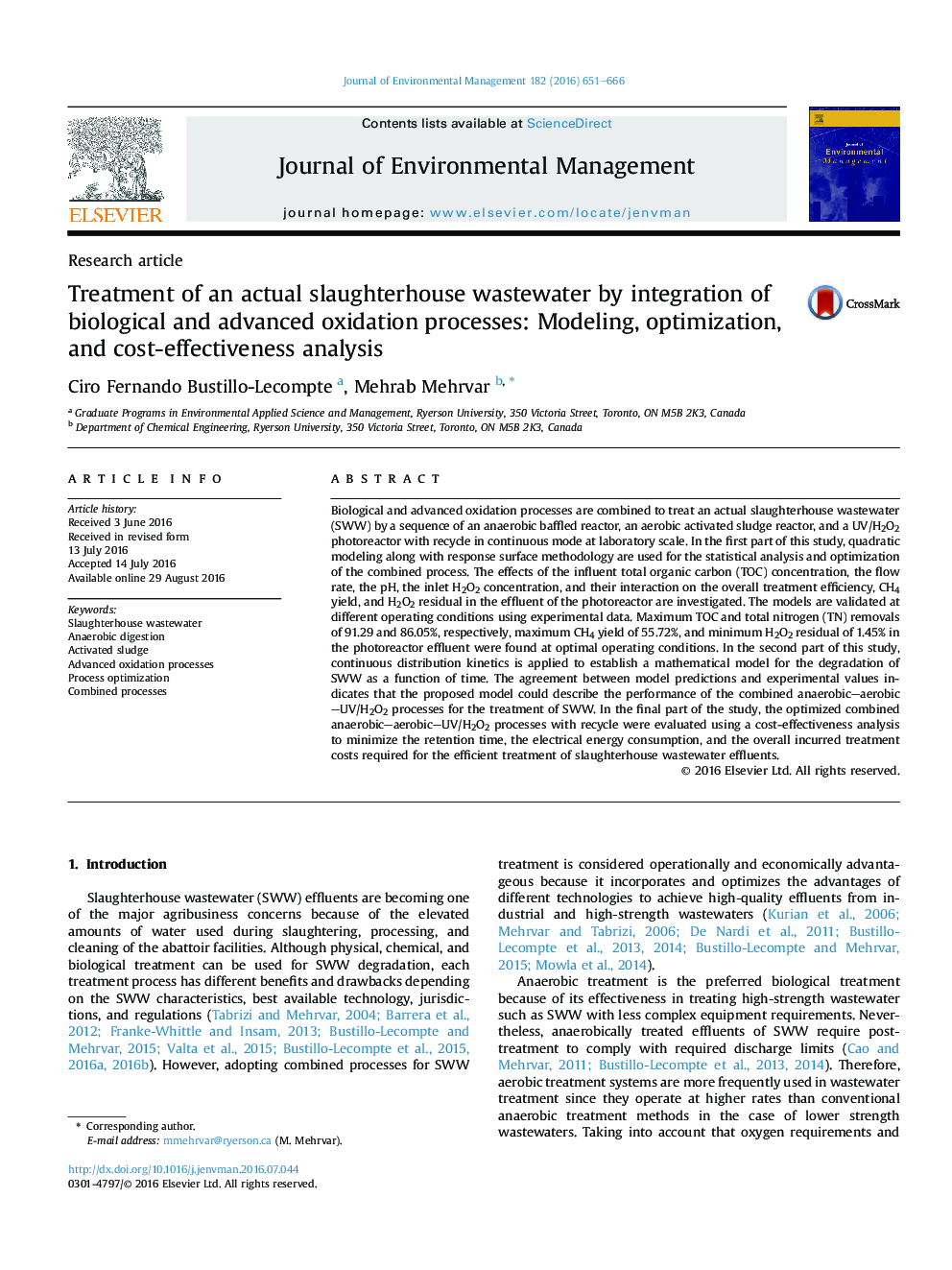| کد مقاله | کد نشریه | سال انتشار | مقاله انگلیسی | نسخه تمام متن |
|---|---|---|---|---|
| 7479313 | 1485230 | 2016 | 16 صفحه PDF | دانلود رایگان |
عنوان انگلیسی مقاله ISI
Treatment of an actual slaughterhouse wastewater by integration of biological and advanced oxidation processes: Modeling, optimization, and cost-effectiveness analysis
ترجمه فارسی عنوان
درمان یک فاضلاب واقعی کشتارگاه با ادغام فرایندهای اکسیداسیون بیولوژیکی و پیشرفته: مدل سازی، بهینه سازی و تجزیه و تحلیل هزینه-اثربخشی
دانلود مقاله + سفارش ترجمه
دانلود مقاله ISI انگلیسی
رایگان برای ایرانیان
کلمات کلیدی
فاضلاب کشتارگاه، هضم بی هوازی لجن فعال فرایندهای اکسیداسیون پیشرفته، بهینه سازی فرآیند، فرآیندهای ترکیبی
موضوعات مرتبط
مهندسی و علوم پایه
مهندسی انرژی
انرژی های تجدید پذیر، توسعه پایدار و محیط زیست
چکیده انگلیسی
Biological and advanced oxidation processes are combined to treat an actual slaughterhouse wastewater (SWW) by a sequence of an anaerobic baffled reactor, an aerobic activated sludge reactor, and a UV/H2O2 photoreactor with recycle in continuous mode at laboratory scale. In the first part of this study, quadratic modeling along with response surface methodology are used for the statistical analysis and optimization of the combined process. The effects of the influent total organic carbon (TOC) concentration, the flow rate, the pH, the inlet H2O2 concentration, and their interaction on the overall treatment efficiency, CH4 yield, and H2O2 residual in the effluent of the photoreactor are investigated. The models are validated at different operating conditions using experimental data. Maximum TOC and total nitrogen (TN) removals of 91.29 and 86.05%, respectively, maximum CH4 yield of 55.72%, and minimum H2O2 residual of 1.45% in the photoreactor effluent were found at optimal operating conditions. In the second part of this study, continuous distribution kinetics is applied to establish a mathematical model for the degradation of SWW as a function of time. The agreement between model predictions and experimental values indicates that the proposed model could describe the performance of the combined anaerobic-aerobic-UV/H2O2 processes for the treatment of SWW. In the final part of the study, the optimized combined anaerobic-aerobic-UV/H2O2 processes with recycle were evaluated using a cost-effectiveness analysis to minimize the retention time, the electrical energy consumption, and the overall incurred treatment costs required for the efficient treatment of slaughterhouse wastewater effluents.
ناشر
Database: Elsevier - ScienceDirect (ساینس دایرکت)
Journal: Journal of Environmental Management - Volume 182, 1 November 2016, Pages 651-666
Journal: Journal of Environmental Management - Volume 182, 1 November 2016, Pages 651-666
نویسندگان
Ciro Fernando Bustillo-Lecompte, Mehrab Mehrvar,
